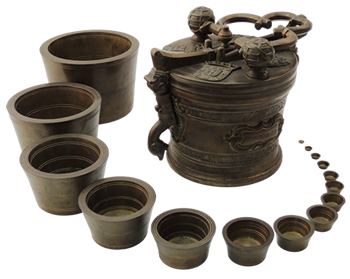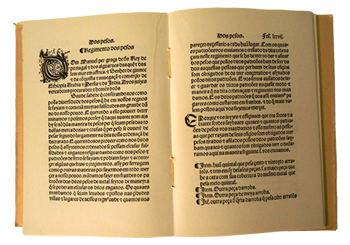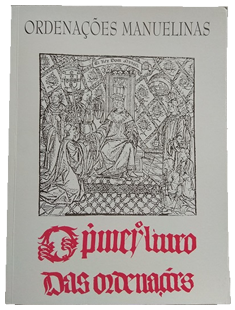
THE MANUELINE REFORM

In 1497, shortly after inheriting the governance of the realm, King Manuel I summoned representatives of the municipalities for the purpose of discussing weight reform. We know that the reform was concluded before the end of the century because the new standards were produced in 1499 and the new charter of Lisbon of 1500 was already based on the new system. This new system derives from a notion introduced by King João II, and it is based on a quintal of 128 arráteis of 16 ounces each. The mark (reproduced along with the other weights that belong to the standard set and also in a larger size), would have been the Cologne mark, which King João II defined as the standard. The horse-load was the equivalent of 10 arrobas.

The new system of weights was included in the Regimento dos Oficiais das Cidades, Vilas e Lugares destes Reinos (Regulations of the Officials of the Cities, Villages and Places of these Realms) printed by order of the King, in order to be distributed throughout the country. As far as we know, this small compilation is the first piece of legislation printed in Portugal. It was sent to the municipalities together with the municipal standards of weight that had meanwhile been ordered from Flanders.

The old 14 ounce arrátel continued to be used for spices and drugs (notably at Casa da Índia, where it remained in use until the 19th century).
With regard to volume measures, for dry products (mainly cereals), the main measure was the alqueire (bushel), with the meio alqueire (half-bushel), the quarta (fourth) and the maquia (it is assumed that it would be worth 1/16 of the bushel) as sub-multiples.
For liquids, wine, the almude was used, with its submultiples: meio almude (half almude), canada (half canada), meia canada (half canada), quartilho (pint) and meio quartilho (half pint). The olive oil was measured by the measures of dry products (bushel and is submultiples).
King Manuel I increased the capacity of the volume measures, the old measure being about 3/4 of the new one. However, contrary to what he did with the weights, the king did not order copies of the volume measurement standards to be distributed throughout the country, which meant that the dissemination of these measures did not have the same relative success as with the new weights.
The most used measures for length were the côvado (cubit) and the vara (pole).

Following the example already started with the previous Ordinances (now known as Ordenações Afonsinas), started in the time of D. João I, but published only in the regency of D. Pedro, uncle of King Afonso V, King Manuel I ordered a new compilation of the laws, which came to be known as Ordenações Manuelinas (Manueline Ordinations). This compilation followed the model of the previous one, with 5 books, having had several versions. The first version was published in 1512-13, with a reissue in 1514. A version followed in 1517, of which little is known (a small part of it was discovered in 2012) and, finally, the final version, of 1521, which is better known, as the king had the previous ones destroyed and replaced by this one. All versions were printed, and the king hired printers for the purpose.
In the first book, the title dedicated to Almotacé-Mor practically completely reproduces the Regulations of the Officials of the Cities, Villages and Places of these Realms with some changes, namely the indication of the main weights and measures, the metrological control (the deadlines for measurement of measures and fines and punishments for those who did not comply with the law), as well as the indication of who was obliged to own the weights and measures, namely the municipalities, depending on the number of inhabitants (neighbors) and the people who needed them for their activity.
In the version edited in 1521, for the first time, a national standard was designated, as the weights and measures should be “the same as those in the city of Lisbon, and not be bigger or smaller …”.
The reform of weights and measures carried out by D. Manuel I at the end of the 15th century was taken into account in the elaboration of the new charters that the king ordered to be distributed by countless municipalities, replacing the previous ones, and came to be divulged with the publication of the Manueline Ordinations. Although in the following centuries (until the adoption of the metric system), measures with the same name and different values continue to coexist, namely in volumes, it was an attempt to standardize the weights and measures that revealed greater systematization and effectiveness, mainly in the field of weights, due to their relatively widespread distribution.